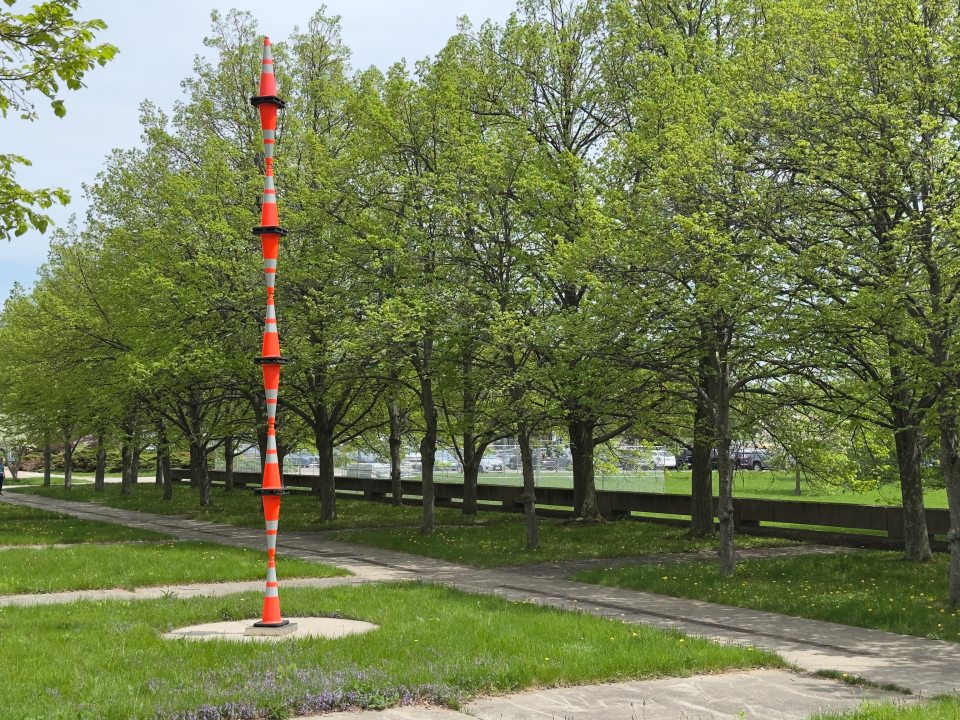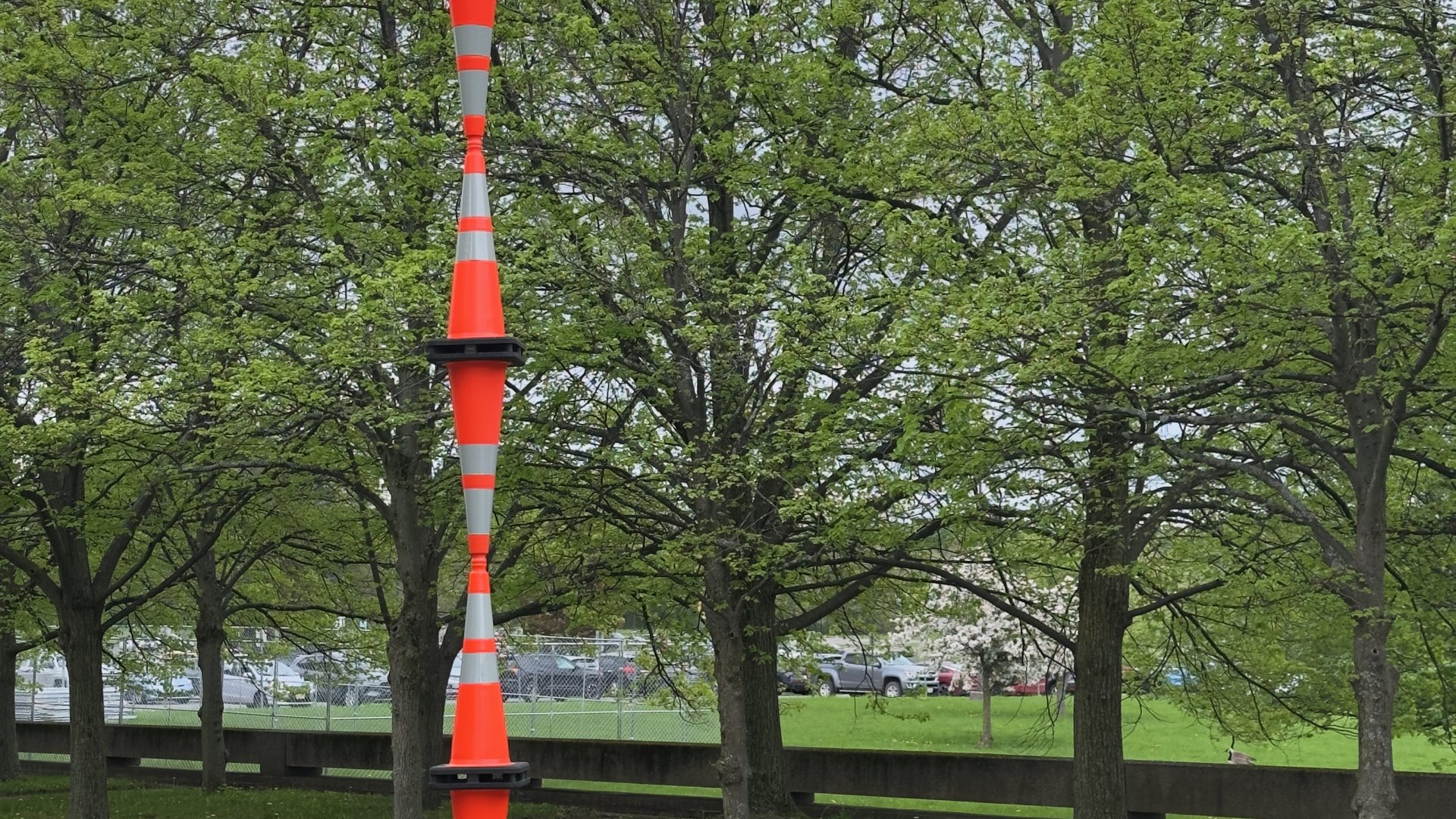
Endless Parking Cone Column, 9 BESEA 28” inch orange PVC traffic cones, black base, and steel, 2023.
Jefferson Nelson
Endless Parking Cone Column, is a look at Constantin Brâncusi’s Endless Column, as seen through a contemporary lens. Here the column is manifested in the seemingly infinite appropriated mass produced objects that seem to forever be directing us or slowing us down. Instead of the finely tuned zen inspiring bronze of Brâncusi’s column the viewer is confronted with the never ending construction cycle, of attention grabbing warning signs, and the absurdity of modern life, but also asked to reconsider and find beauty in these everyday objects and their odd new juxtaposition. Where Brâncusi’s column suggests infinite growth and development as it reaches for the sky, the parking cones suggest a pause: to slow down, or to change direction. I engage the viewer with a “hook”, a color, a form, a reflection, a familiar object that captures their attention. Through the accumulation of my images, the viewer will be engaged at a distant and venture closer for inspection. I hope that they consider the meaning of my image later with only their recalled experience of it.
